This article has been
cited by other articles in ScienceCentral.
Abstract
Anterior open bite and transverse discrepancy are often accompanied by hyperdivergent skeletal patterns. In addition, degenerative joint disorders and vertical maxillary excess contribute to an unfavorable convex facial profile with a retruded chin. Correction of this complex three-dimensional problem with orthodontic treatment alone is considered challenging owing to anatomical limitations. Moreover, a history of orthodontic treatment with premolar extraction makes retreatment difficult. This case report illustrates the application of a maxillary tissue bone-borne expander and biocreative reverse curve system in a 23-year-old female patient with a severe anterior open bite and transverse discrepancy who underwent orthodontic treatment with four premolar extractions. By setting the treatment target under precise diagnosis and using appropriate appliances, a satisfactory treatment result could be achieved without orthognathic surgery.
Keywords: Miniplate, Expansion, Relapse, Class II
INTRODUCTION
Orthodontic correction of anterior open bite in patients with hyperdivergent skeletal pattern was previously considered challenging, as the vertical problems usually combine with the transverse and sagittal problems, and the overall correction is prone to relapse.
1 Even though few cases with anterior open bite have been treated by extruding incisors using various methods,
2 intrusion of maxillary molars is required to promote the counterclockwise rotation of the mandible, which results in a decrease of the anterior facial height and advancement of the retruded chin. Moreover, in a recent systematic review and meta-analysis, it was concluded that the stability of anterior open bite treatment with molar intrusion was similar to the stability after surgical approaches.
3,4 Intrusion of maxillary molars has become relatively easier to achieve with the aid of various temporary skeletal anchorage devices (TSADs).
5-7 In cases with transverse discrepancy of the maxilla, a tissue bone-borne expander named C-expander is used to expand the bone without any side effects that are expected with a conventional tooth-borne expander.
8,9 Miniscrews as a component of the C-expander, which are used to expand the palatal bone, could also be utilized as an anchorage for the intrusion of maxillary molars after completion of the palatal expansion.
10
When mesial angulation of the mandibular molars is accompanied by anterior open bite, uprighting the molars is often necessary. Moreover, the mandibular molars should be placed in the right position based on the mandibular bone to achieve a favorable occlusion and long-term retention.
11 If the axes of the molars are incorrect, traumatic force can adversely affect the periodontal health. Conventionally, various springs, accessories, and archwires with multiple loops have been used to prompt the uprighting of mandibular molars.
12-14 A representative example of this attempt is the multiloop edgewise archwire technique,
15 which involves an archwire designed to lend a reverse curve to the overall shape while promoting three-dimensional individual tooth movement. Although this technique can effectively upright molars and correct anterior open bite, the patient’s compliance in using intermaxillary elastics is essential. In addition, the use of elastics sometimes causes side effects.
16 In order to overcome these limitations, a novel system using an anterior C-tube miniplate combined with a reverse curve nickel-titanium (NiTi) archwire named as the biocreative reverse curve (BRC) system was devised to upright mandibular posterior teeth without the patient’s compliance.
17,18
In this case report, orthodontic treatment using a C-expander and the BRC system was performed for a patient with anterior open bite and hyperdivergent skeletal pattern accompanied by a narrow maxillary arch and mesially angulated mandibular posterior teeth.
DIAGNOSIS AND ETIOLOGY
A 23-year-old female visited the clinic with the chief complaint of an anterior open bite. She had a history of orthodontic treatment with extraction of the first four premolars approximately 10 years ago. Owing to the continued vertical growth of the maxilla, she presented with an anterior open bite with lip incompetency and retruded chin causing a convex facial profile. Additionally, she was a mouth-breather. Intraoral examination indicated Class II molar and canine keys with a slightly deviated dental midline. Only the second and third molars were in contact with each other, and the maxillary arch was relatively narrow (
Figure 1). On panoramic radiography, both condyles were flattened, indicating a degenerative joint disease. She complained of pain in both temporomandibular joints, and a centric relation-maximum intercuspation (CR-MI) discrepancy was found with her mandible shifting anteriorly. Mesially angulated mandibular posterior teeth were also observed in the panoramic image. The lateral cephalometric image showed a hyperdivergent skeletal pattern with a vertical maxillary excess (46.70° of FMA) and a sagittal discrepancy between the maxilla and mandible (9.04° of ANB). She also had a thin alveolar bone housing of the mandibular symphyseal area, low tongue posture, and a narrow upper airway (
Figure 2 and
Table 1). The maxilla was constricted compared with the mandible, presenting an insufficient buccal overjet in the posterior area. Considering Yonsei transverse index and intermolar width differences, it was the incorrect tooth axis that led to small buccal overjet. Moreover, a high palatal index suggested relatively narrow palatal vault of the patient. Additionally, dental caries on the third molars and generalized slight gingival recession were observed in the intraoral photographs (
Figure 1).
Clinical and radiographic examinations confirmed that the patient had a skeletal and dental Class II hyperdivergent pattern, an anterior open bite, vertical maxillary excess, and mesially angulated mandibular posterior teeth.
Informed consent was obtained from the patient for the release of the patient’s records.
TREATMENT OBJECTIVES
The treatment objectives were, (1) to correct the anterior open bite, (2) to promote counterclockwise autorotation, (3) to improve the occlusion establishing Class I molar and canine keys, (4) to upright the mesially tilted mandibular molars, (5) to increase the maxillary width for coordinating it with the mandibular width, and (6) to improve the facial profile, especially at the lower third. Since the patient showed a hyperdivergent skeletal pattern accompanied by a retruded chin, extra effort was required in addition to orthodontic correction for the esthetic improvement of the lower third of the face.
TREATMENT ALTERNATIVES
After examining the patient with various clinical data, several treatment options were suggested. Considering her chief complaint, unfavorable skeletal pattern, and experience of orthodontic treatment with premolar extractions, orthodontic treatment with orthognathic surgery was suggested as the primary treatment option. Surgical impaction of the maxilla was planned to improve the vertical facial height, and mandibular advancement was considered to correct the anteroposterior position of the mandible. Rotational surgical movement of the maxilla with autorotation of the mandible in a counterclockwise direction was planned to correct the anterior open bite. However, the patient did not agree with the orthognathic surgery option.
Nonsurgical correction of the anterior open bite can be achieved by extrusion of the anterior teeth or intrusion of the posterior teeth. The molar intrusion was a more favorable option because the patient had a long face with lip incompetency. Anterior open bite is classified into two groups, V-form and Y-form, depending on whether there are occlusal contacts in the premolars.
19 The V-form anterior open bite is relatively easy to improve through molar intrusion compared to the Y-form. The patient showed a V-form anterior open bite, without occlusal contacts between the premolars and first molars. Therefore, molar intrusion using TSADs was considered as the first choice of treatment.
There are several options for expanding the relatively narrow maxilla. Tooth-borne palatal expansion results in adverse periodontal consequences such as gingival recession or alveolar bone dehiscence. With the aid of miniscrews as TSADs, tooth- and bone-borne palatal expansion has been introduced as another treatment option for patients with maxillary transverse deficiency. Although the amount of expansion is not as much as tooth-borne palatal expansion, the buccal bone height tends to decrease, and the teeth tends to be more buccally inclined than when expanding with tissue bone-borne palatal expansion.
20 The patient had a thin gingival biotype and gingival recession in the maxillary premolars before treatment. Therefore, side effects could be minimized on using a tissue bone-borne palatal expander.
The multi-loop edgewise archwire technique is one of the best options to upright mesially angulated mandibular molars. However, it requires bracket attachment of the entire dentition, including the anterior teeth, and patient cooperation is necessary as the use of intermaxillary elastic bands is necessary. In addition, the use of elastic bands is inevitable in patients with a history of temporomandibular disorders. Hence, the BRC system without bonding brackets to the anterior teeth was a suitable option to actively upright the mandibular molars for this patient (
Figure 3).
TREATMENT PROGRESS
An I-type C-tube miniplate was placed in the symphyseal area between the mandibular central incisors and was fixed on the bone surface with two screws, after exposing the labial alveolar bone. A mesh-type lingual arch was bonded on the lingual surface of the mandibular premolars to stabilize the transverse dimension of the mandibular arch while the BRC system was in effect, and 0.022-inch slot brackets and tubes (Bioquick; Forestadent Co., Pforzheim, Germany) in Tweemac prescription were bonded using bracket jigs on the mandibular premolars and first and second molars.
21,22 Subsequently, a 0.017 × 0.025-inch reverse curve NiTi archwire was inserted into the bonded brackets and tubes. The archwire was lifted using a brass wire connected to the C-tube miniplate and twisted to generate an upright and intrusion moment in the posterior teeth (
Figure 4).
23 Two months later, a C-expander which is a tissue bone-borne palatal expander, was placed on the palate to expand the maxilla transversely (
Figures 5 and
6). The patient was asked to turn the expansion screw twice a week. At the mid-palatal suture level, the anterior part of the palate was separated by 2.62 mm and the posterior parts were expanded by 3.53 mm (
Figure 7). After resolving the transverse discrepancy for two months, the entire maxillary dentition was intruded
en masse using the C-expander on the palate and two additional C-tube miniplates on the buccal vestibule as absolute anchorage for total intrusion. With this approach, the open bite was resolved by mandibular counterclockwise autorotation without any unnecessary extrusion of the maxillary and mandibular anterior teeth. While intrusion of the maxillary molars was stopped after obtaining a positive overbite of the anterior teeth, the twisted BRC system applied on the posterior mandibular teeth was maintained. The brackets were bonded to the entire maxillary dentition (
Figure 8). After sufficiently uprighting the mandibular molars, brackets were bonded to the rest of the mandibular dentition. Leveling and alignment, and finishing and detailing procedures were easily performed because the vertical problem, which was one of the biggest problems, was already solved (
Figure 9). The procedures were completed within 6 months and all fixed appliances were removed after 2.5 years of active treatment. Lingual fixed retainers were attached to the lingual side of the anterior teeth, including premolars, in both dental arches. A clear overlay retainer named oral-treaper retainer
24 and a tongue elevator were used as removable retainers for the maxillary and mandibular arch, respectively. To improve the facial profile, the patient was referred to the Department of Oral and Maxillofacial Surgery and underwent advancement genioplasty.
RESULTS
The patient’s open bite was completely corrected, and a positive overbite was established by the intrusion of the maxillary molars. The mandibular molars showed intrusion and distal uprighting, inducing a transitional occlusion of Tweed-Merrifield directional force technology.
25 Functional occlusion with a Class I molar and canine key was achieved. The transverse discrepancy was corrected by maxillary expansion. The maxillary incisors showed controlled tipping without extrusion and the position of the mandibular incisors were almost maintained, indicating that intrusion of the maxillary posterior teeth significantly contributed to the correction of the anterior open bite (
Figures 10–
12). Despite the intrusion of molars and resultant counterclockwise rotation of mandible, the ANB rather increased. It was because the CR-MI discrepancy which was present at the initial stage disappeared throughout the treatment and the mandible was repositioned backward (
Table 1). The patient had no CR-MI discrepancy after treatment and no symptoms at the temporomandibular joint area. The patient’s facial profile was considerably improved by a combination of counterclockwise autorotation of the mandible and advancement genioplasty (
Figure 13). The occlusal plane was reconstructed in a counterclockwise direction by uprighting the mandibular posterior teeth using the twisted BRC system, in which the molars were effectively tipped distally without extrusion of the first molars.
23
After a 4-year retention period, the occlusion and facial profile of the patient remained stable. Due to the occlusal rest on the tongue elevator, the mandibular posterior teeth have maintained their vertical position, thus preventing relapse of the open bite (
Figure 14).
DISCUSSION
The present case describes the strategic uprighting of mandibular molars using the BRC system accompanied by the intrusion of maxillary posterior teeth in a patient with an anterior open bite and mesially tilted mandibular molars. This system not only helped maintain the vertical position of the occlusion, but also improved stability by changing the occlusal plane angle.
According to a two-dimensional analysis of individual teeth using the BRC system, the largest tipping moment and intrusion force occurred in the mandibular second molar. However, other teeth, except for the second molar, were not intruded but extruded or maintained vertically.
18 Since this patient had a V-form anterior open bite in which only the second molars were in occlusion before treatment, it was judged that the intrusion of the mandibular second molar through the BRC system was very effective in improving the anterior open bite. Especially, the twisting technique was applied as an additional applicable method in the BRC system to reduce the unnecessary extrusion effect of the premolars and molars in this patient.
23 Change in the angle of insertion of the reverse-curved Ni-Ti archwire in the brass wire connector by twisting and resin application increases the intrusion force of the molars and the uprighting moment.
23
In this case, a tissue bone-borne expander was applied, and the expander was activated at a rate of two turns per week (0.4 mm widening). This protocol followed a previous research about the change of molars and alveolar bone after expanding the maxilla using the same tissue bone-borne expander.
20 In their study, slow expansion with C-expander and rapid expansion with Maxillary-Skeletal-Expander showed a similar amount of maxillary skeletal expansion. In addition, they suggested that there was risk of breakage of the turning instrument when the stress was too excessive during rapid expansion.
Unlike other tooth and bone borne expanders, miniscrews are placed before the expander is installed. Moreover, if the resin part of the C-expander is removed after the palatal expansion is complete, miniscrews can be used continuously as TSADs. The intraoral photograph in
Figure 7 shows the traces of the areas where the resin part of the C-expander existed and the miniscrews that remained as they were originally placed. Moreover, they were used for continuous intrusion and torque control of the molars.
In this case, the occlusal plane changed by uprighting of mandibular molars as a result of orthodontic treatment. The occlusal plane angle is measured relative to two different reference planes: the Frankfort horizontal plane and the mandibular plane. The angle between the occlusal plane and Frankfort horizontal plane (OP-FH) represents the slope of occlusion with respect to the maxillary basal bone, and the angle between the mandibular plane and occlusal plane (MP-OP) indicates it with respect to the mandibular basal bone. In this case, although OP-FH increased after treatment (from 17.72° to 19.46°), MP-OP decreased with a bigger amount (from 28.98° to 25.24°). This indicates that the change in the occlusal plane was mostly due to a decrease of the mandibular occlusal plane. This shows that BRC system is effective in patients requiring change in the occlusal plane of the mandible, especially if it is due to the mesial inclination of the mandibular molars.
The dimension or width of the pharyngeal airway can be an indicator for diagnosing breathing disorders, even though it is not an absolute factor. The most common craniofacial feature of patients with breathing disorders is a Class II hyperdivergent skeletal pattern if the disorders are due to anatomic problems.
26 In this case, both superior and inferior airway width increased on the cephalometric radiography after orthodontic treatment. However, when the pharyngeal airway space was measured using cone beam computed tomography images, only hypopharyngeal airway space increased after advancement genioplasty. This is thought to be a result of the advancement genioplasty and is consistent with the findings of Torres et al.
27 about the effect of genioplasty on the pharyngeal airway space following maxillomandibular advancement surgery. There have been no reports on the relationship between the treatment method used in this case and changes in the pharyngeal airway space, so further research is needed.
In patients with a narrow maxillary arch, low tongue position is often observed, which may lead to a vicious cycle of gradual narrowing of the maxillary arch. In addition, if the tongue is not properly positioned in the palatal arch and is displaced forward, it may adversely affect the resolution of the anterior open bite. Therefore, efforts, such as myofunctional therapy are required to correct the position of the tongue even after active orthodontic treatment, and the posture of the tongue can be further improved through additional devices.
28 The tongue elevator used during the retention period in this patient not only performed this role, but also prevented relapse of the anterior open bite. On the tongue elevator, there were occlusal rests at the first and second molar areas, and when the tongue applied force onto the device it was transmitted to these occlusal rests, continuously applying intrusion force to the mandibular molars.
28 Since anterior open bite have a possibility of relapse after it is corrected orthodontically, this strategy is considered very helpful for retention.
CONCLUSIONS
The use of a maxillary tissue bone-borne expander and the BRC system was effective in treating a 23-year-old female patient who had an anterior open bite with a hyperdivergent mandible and transverse discrepancy of the maxilla. By setting the treatment target under precise diagnosis and using the appropriate appliances, a satisfactory result was achieved, and the result was well maintained during the 4-year retention period. The twisted BRC system can be an extra option in cases that are previously considered impossible to correct only with orthodontic treatment due to the underlying anatomical limitations.

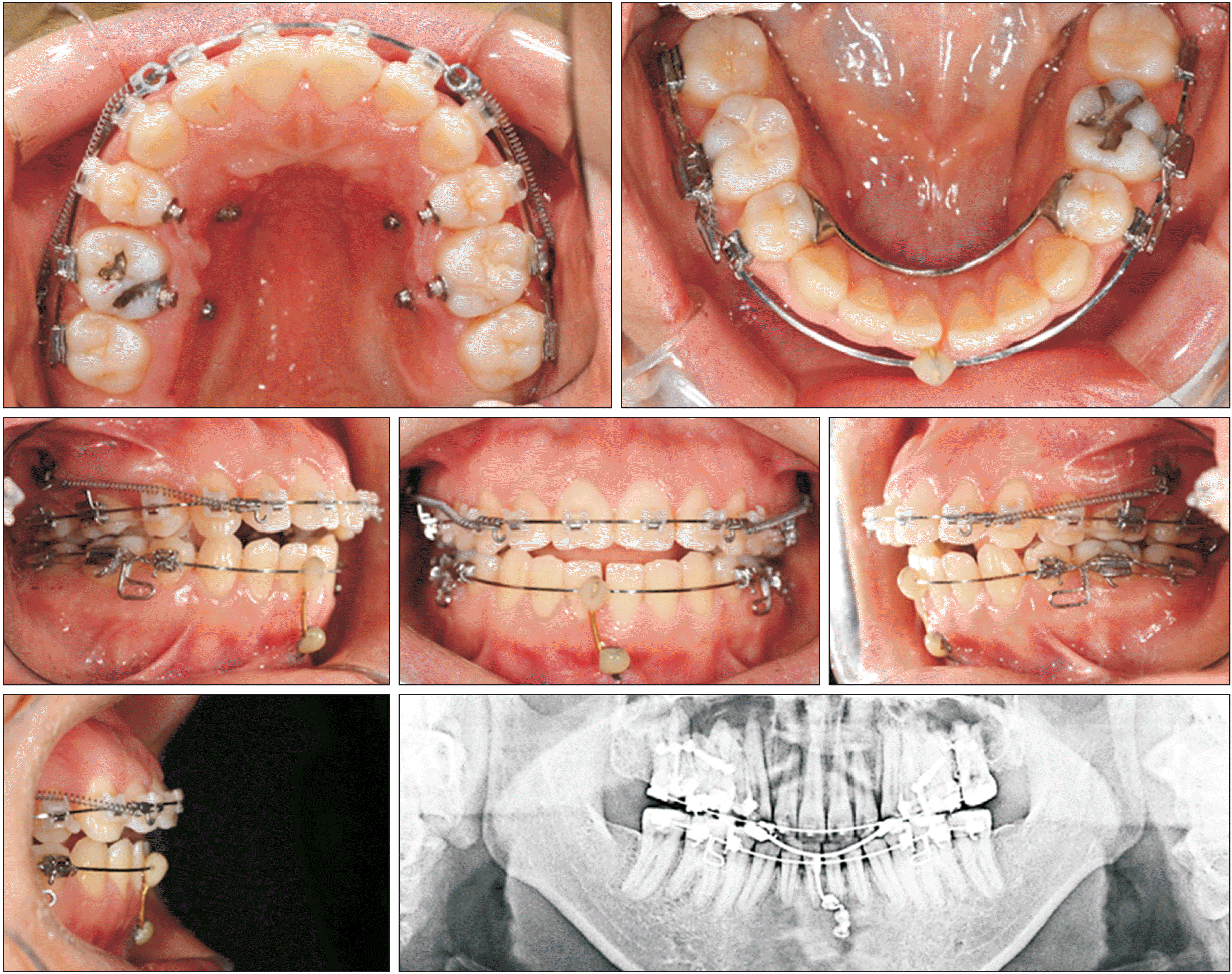





 PDF
PDF Citation
Citation Print
Print



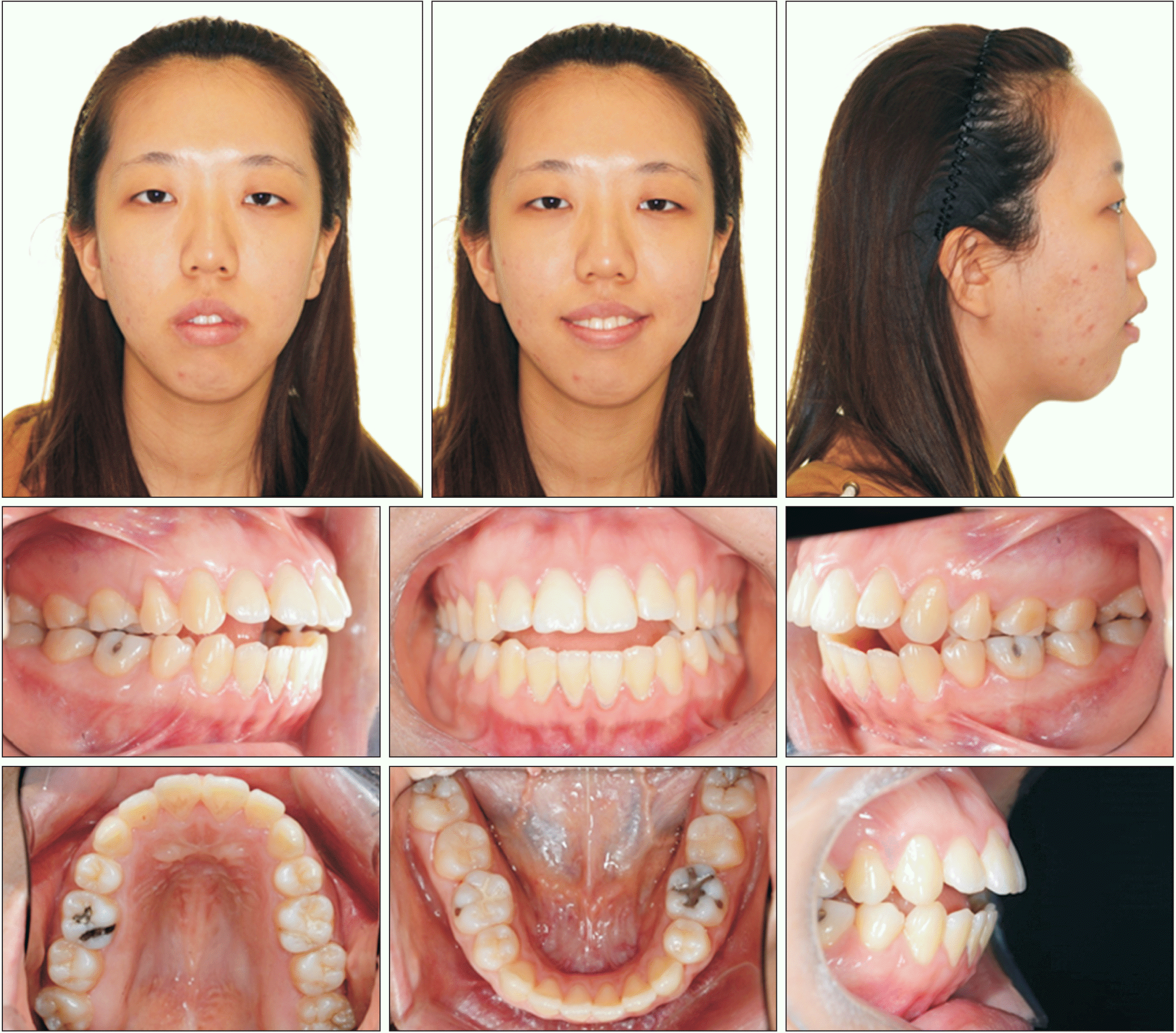

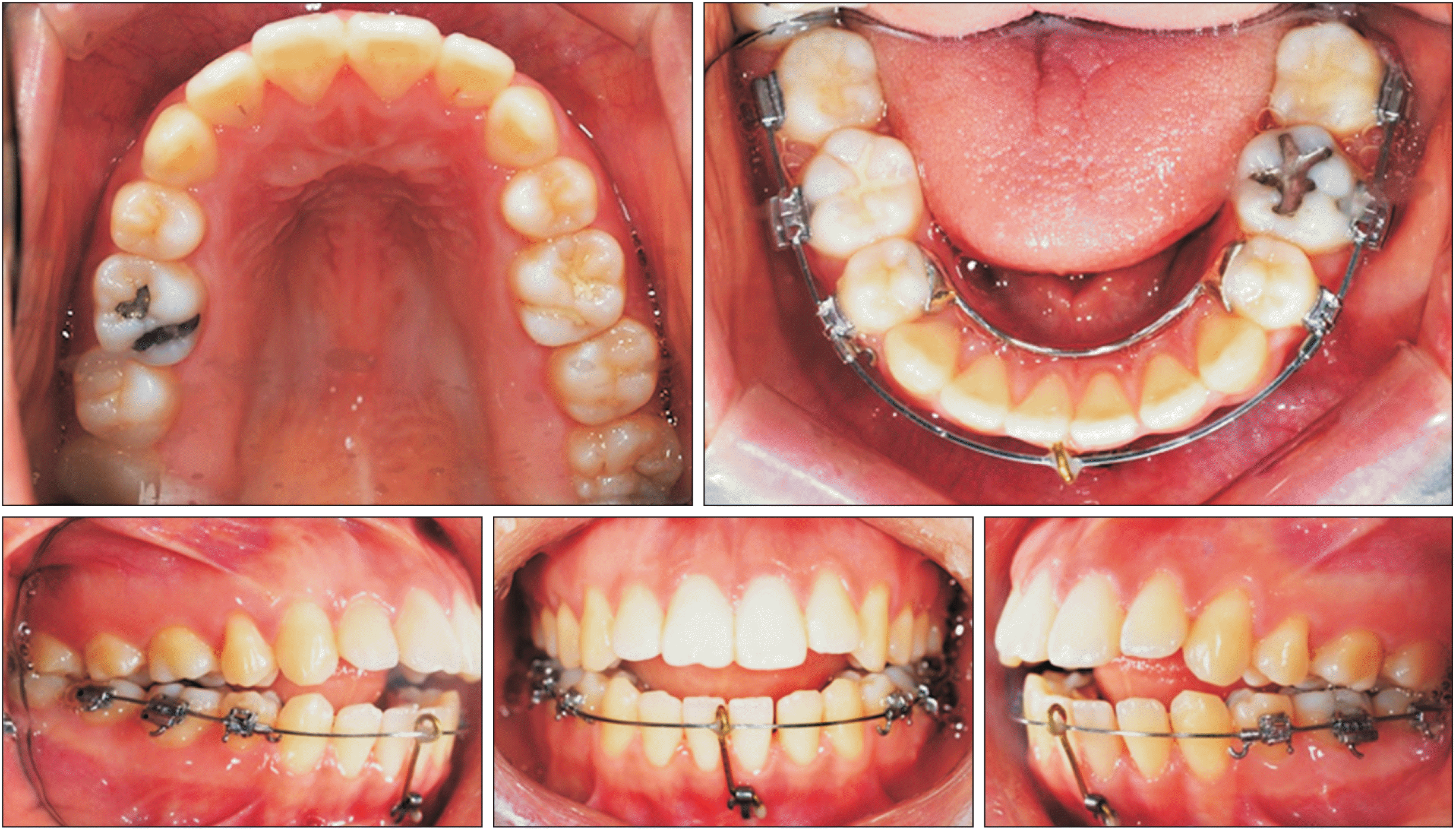
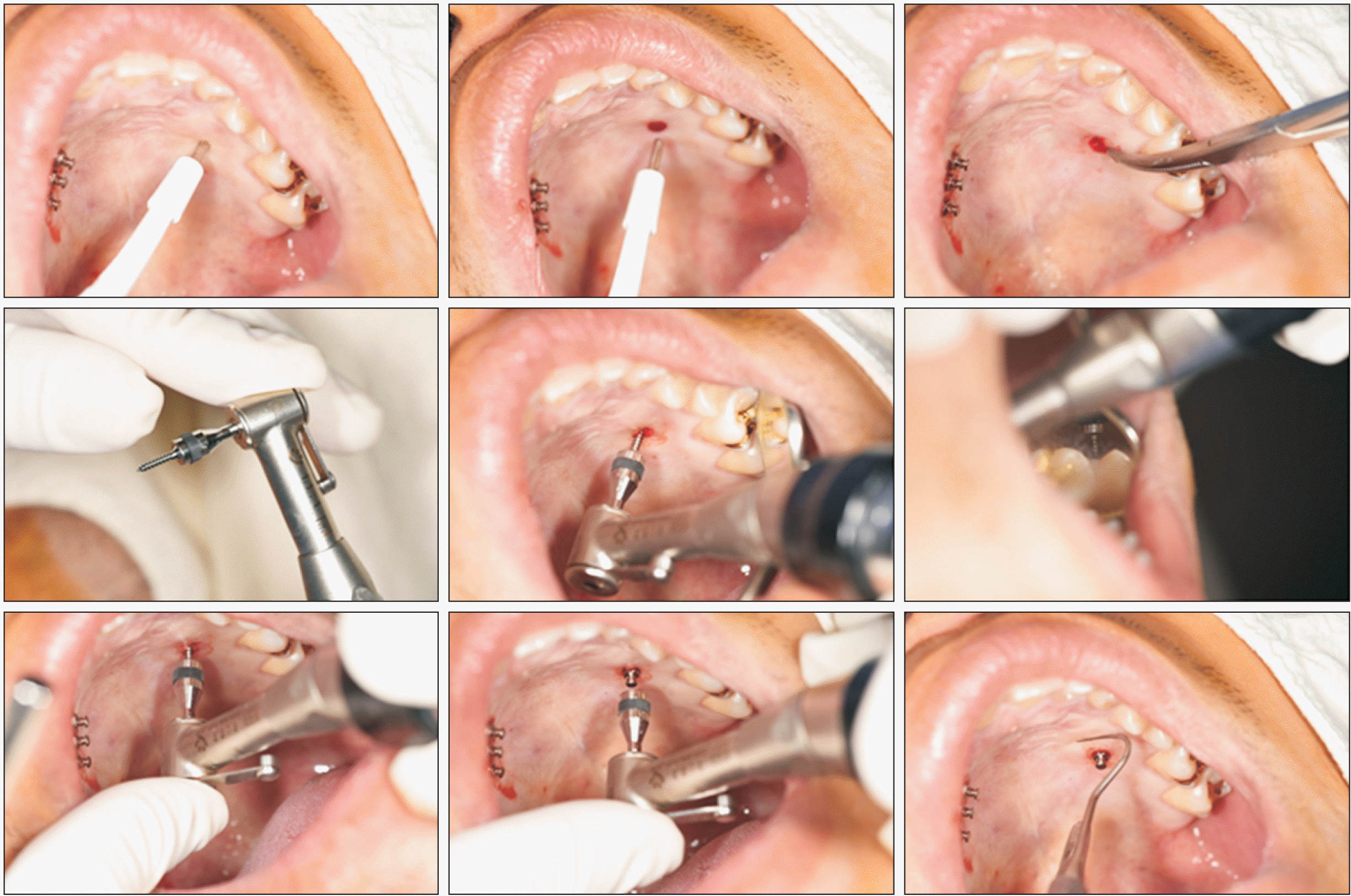
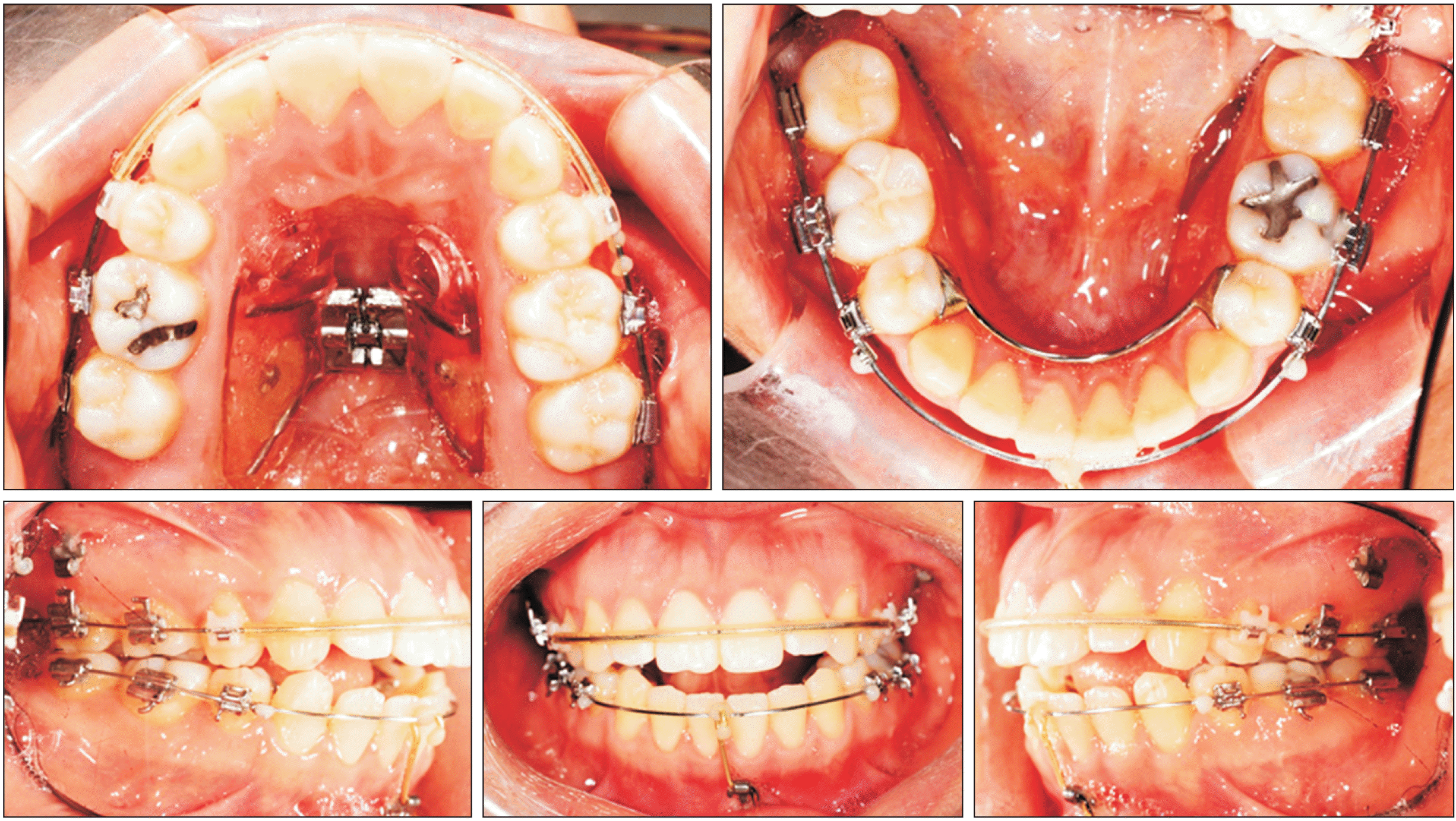
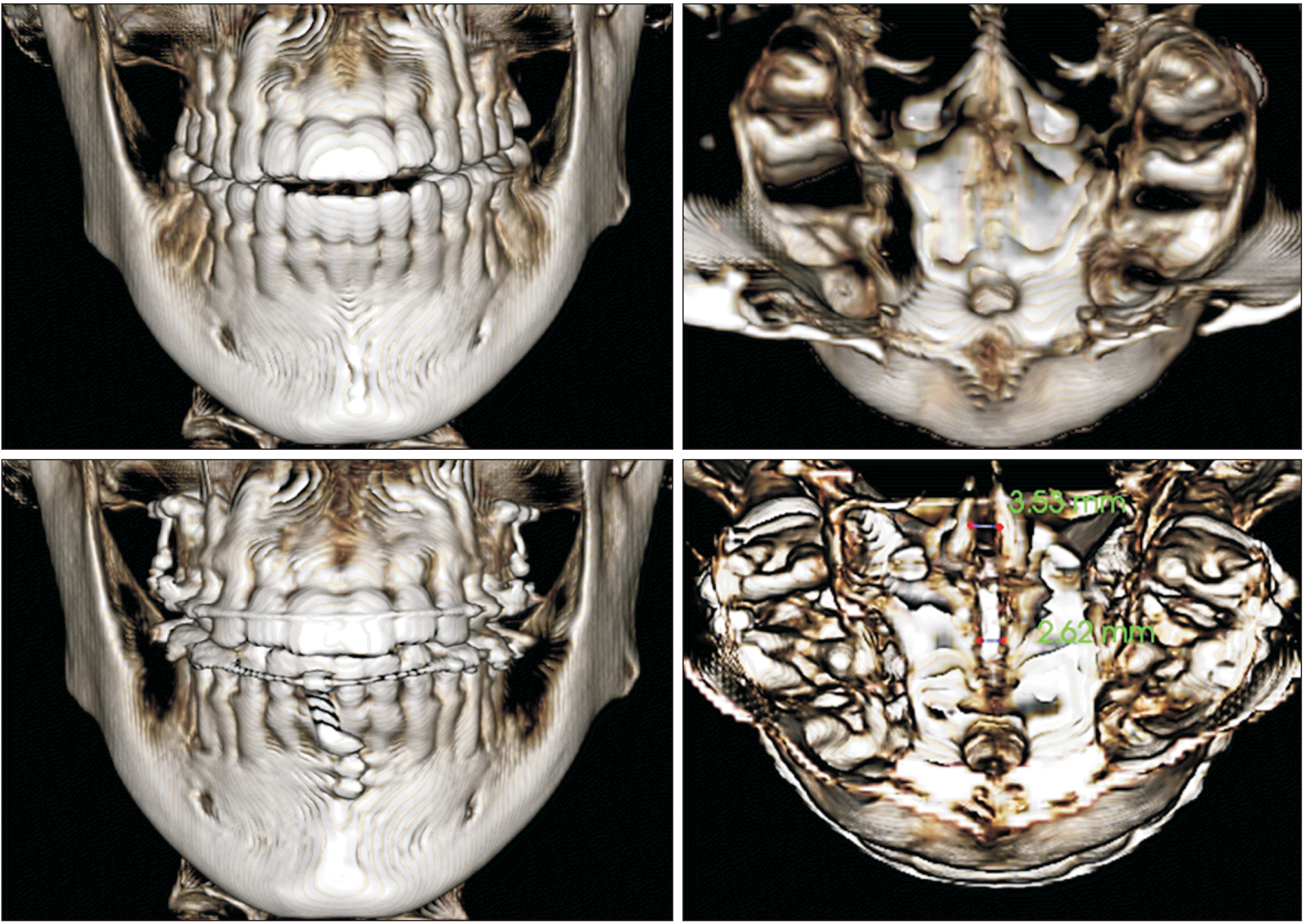

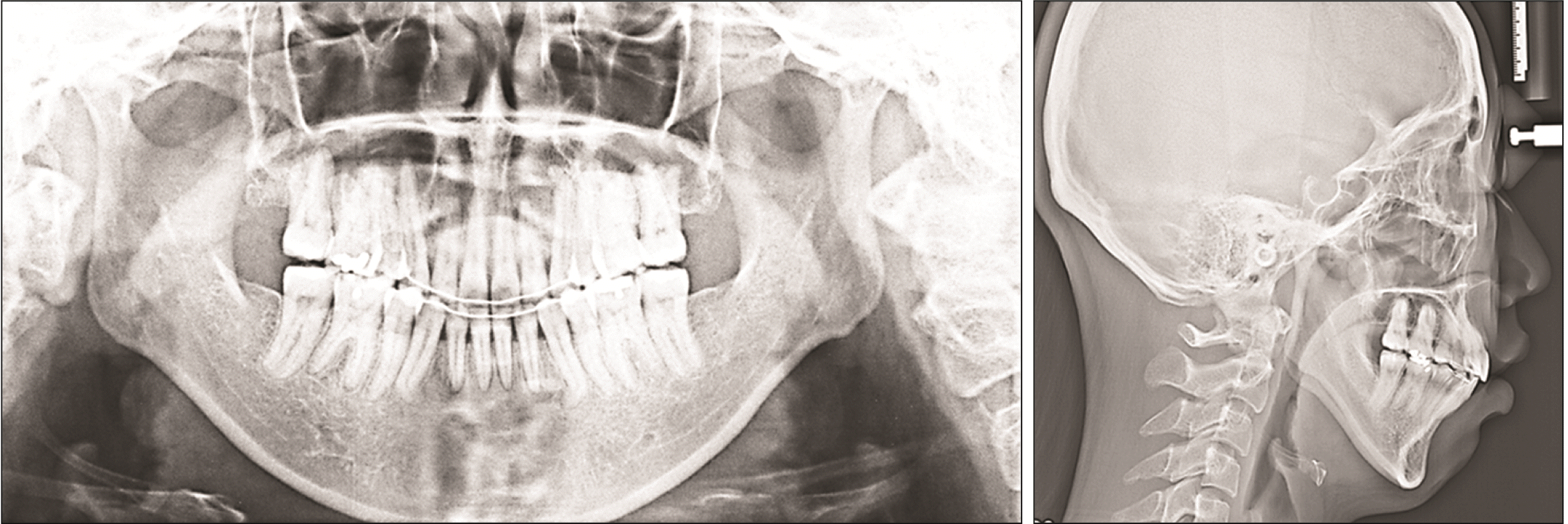
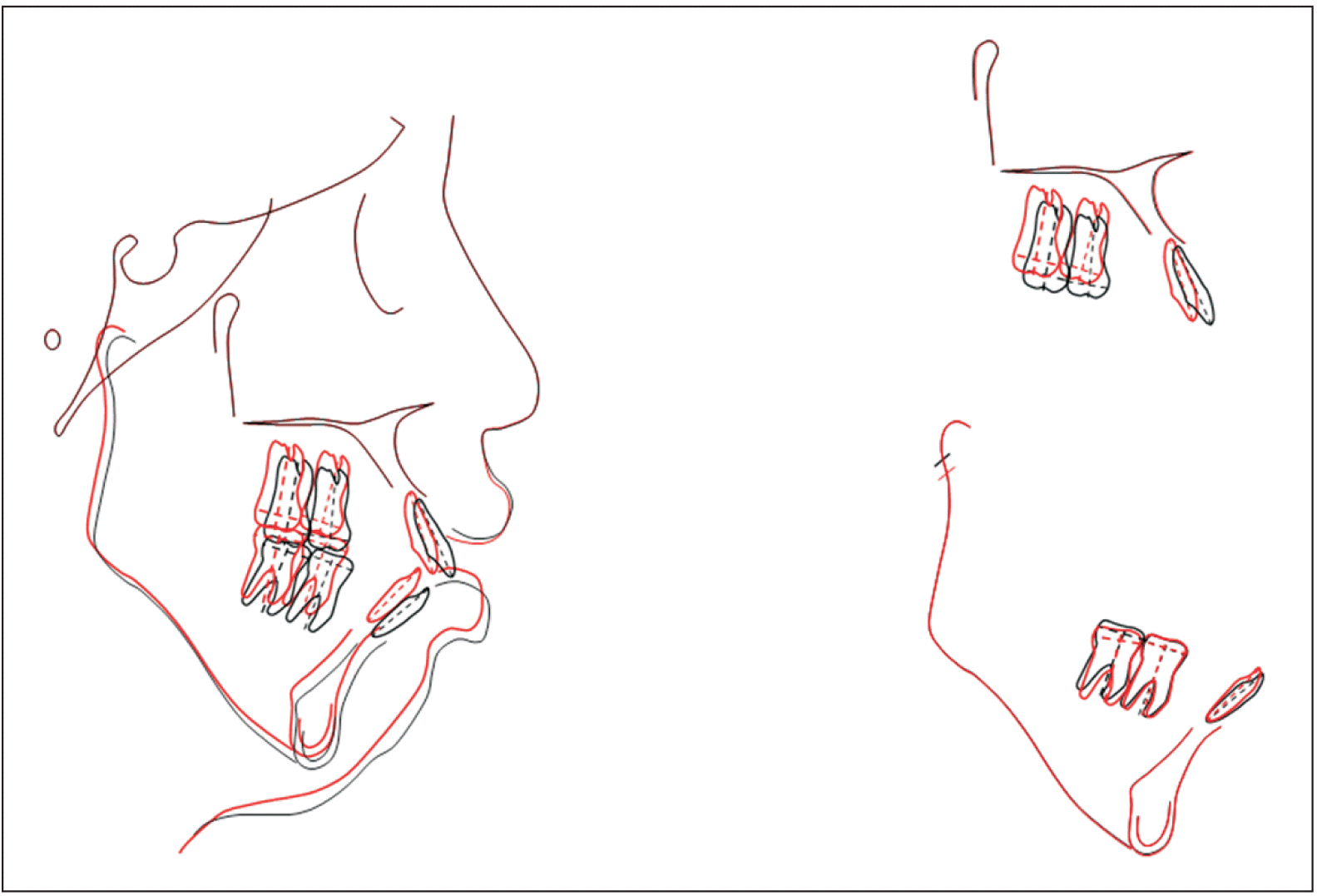
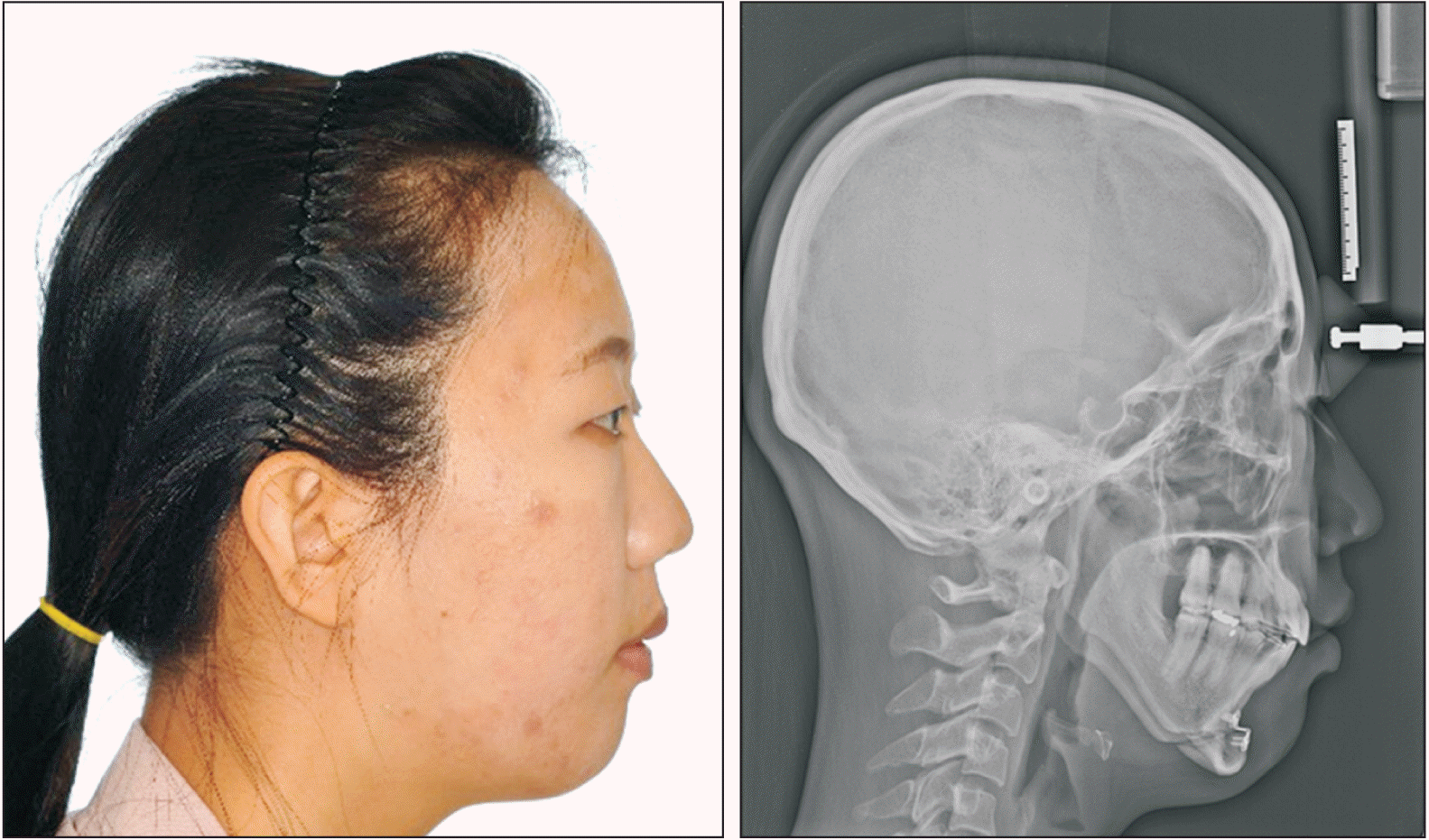
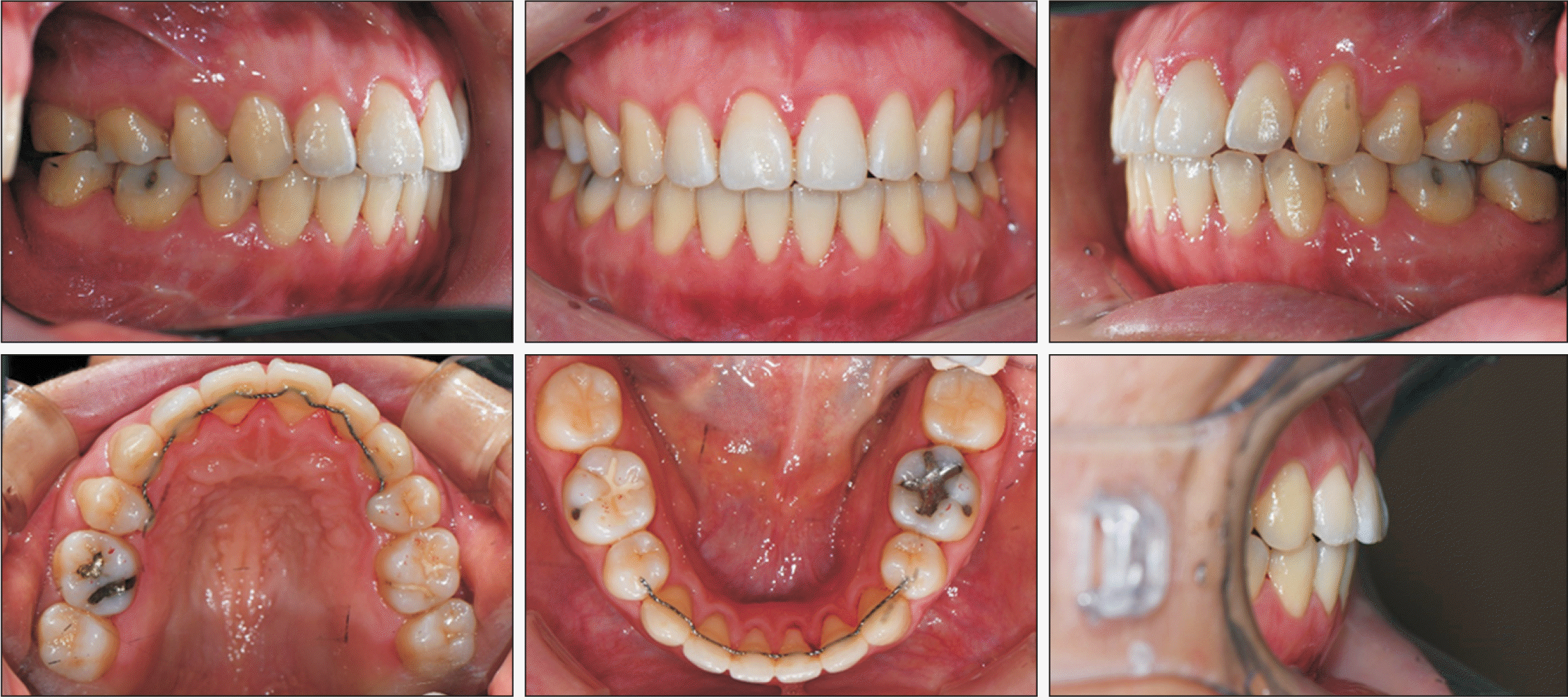
 XML Download
XML Download